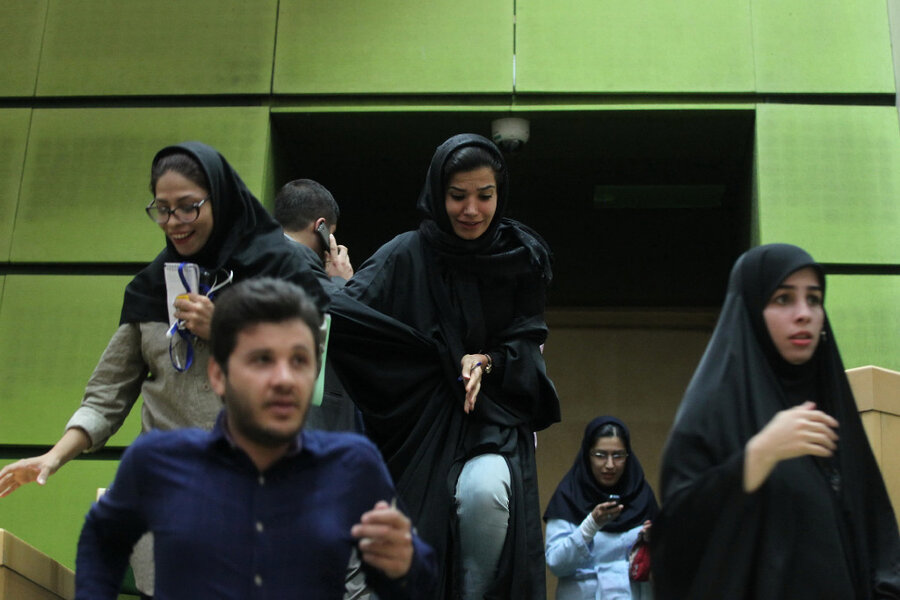One antidote to the use of female jihadists
Loading...
Analysts are still weighing the potential repercussions in the Middle East of the June 7 terrorist strikes in Iran. If Islamic State (ISIS) is behind the attacks, as the group claims, that may influence the wars in Syria and Iraq, tensions between Iran and Saudi Arabia, or ISIS’s competition with Al Qaeda. But one aspect of the assault in Iran is worth noting: One of the attackers was a woman, according to the Fars News Agency.
Hundreds of women have joined ISIS since 2014, but none has had such a prominent role as in the Iran attacks. As more terrorist groups use female jihadists, several Muslim countries are trying to raise the role of women in Islamic life – as spiritual guides. The hope is that women, either as teachers or preachers of moderate Islam, can prevent the radicalization of young people, either men or women.
These efforts are only a few years old but they are worth noting as a possible antidote to women becoming terrorists. Morocco has already trained more than 400 women since 2006 to work in mosques, schools, and other institutions. Turkey has been increasing the number of female preachers since 2003 while Egypt decided earlier this year to appoint as many as 200 female imams.
While women leading men in prayer is still forbidden in most Muslim countries, China, with some 21 million Muslims, has long had female preachers. And Indonesia, which is home to the highest number of Muslims, has a long history of women as preachers. In April, it held what may have been the first “congress” of female Muslim clerics. The event attracted participants from several countries.
Giving authority to women in religious leadership has changed many religions for the better. It promotes equality based on the idea that all are equal before God. Within Islam, women trained as spiritual guides might be better able to reach would-be recruits of groups like ISIS. If successful, such efforts could not only reduce the number of recruits but change life for women in many Islamic societies.







